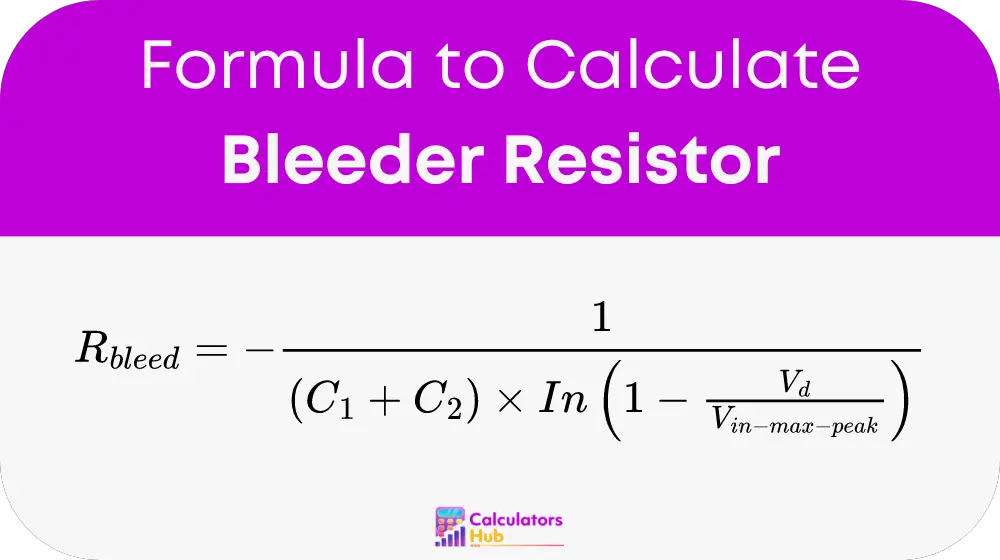A bleeder resistor is an essential component that is connected across the terminals of a capacitor in an electronic circuit. The primary function of this resistor is to safely discharge the capacitor’s stored voltage gradually, preventing any accidental shock or damage during maintenance or when handling the circuit.
Importance of Bleeder Resistors
Bleeder resistors are crucial for maintaining safety standards in electronic projects. They help to dissipate the residual charge that capacitors hold, which can be dangerously high even when the power source is turned off. The use of bleeder resistors is particularly important in power supply circuits and other high-voltage applications where human interaction is likely.
Applications of Bleeder Resistors
Common applications of bleeder resistors include:
- Power supplies
- Voltage dividers
- Snubber circuits These resistors ensure that no charge is left behind that could potentially cause an electric shock.
Formula of Bleeder Resistor Calculator
To calculate the correct value for a bleeder resistor, the following formula is used:

This formula ensures that the capacitor discharges to a safe voltage level within a reasonable amount of time.
Explanation of the Formula Components
C1 and C2: These are the values of the capacitors (in Farads) you wish to discharge. If more than one capacitor is involve and they are configure in parallel, their values are add together.
Vd: This is the voltage to which you want the capacitor to discharge. Typically, this is set around 60 volts to ensure safety.
Vin_max_peak: This refers to the maximum voltage that the capacitor can handle, which includes considering the peak (not RMS) of an AC voltage source if applicable.
ln (natural logarithm): This component of the formula is critical for calculating the time constant of the discharge process, which determines how quickly the capacitor will reach the safe voltage level.
Pre-calculated Table for Common Capacitor Values
To aid in quick calculations, below is a table with pre-calculate resistor values for commonly use capacitor setups (assume Vd is 60V and Vin_max_peak is 120V):
| C1 + C2 (μF) | Rbleed (KΩ) |
|---|---|
| 0.1 | 14.8 |
| 1 | 1.48 |
| 10 | 0.148 |
| 100 | 0.0148 |
Example of Bleeder Resistor Calculator
Scenario: Discharging a 0.1 μF Capacitor at 120V
- Problem Statement: Determine the bleeder resistor required to safely discharge a 0.1 μF capacitor charged to 120V to below 60V.
- Calculation:
- Capacitance (C1 + C2): 0.1 μF
- Desired discharge voltage (Vd): 60V
- Maximum voltage (Vin_max_peak): 120V
Rbleed = (-1) / ((0.1e-6) * (ln(1 - 60 / 120))) ≈ 14.8 KΩ- Result Interpretation: A 14.8 KΩ resistor should be use to safely discharge the capacitor to below 60V within a reasonable time frame.
Most Common FAQs
Not using a bleeder resistor can result in the capacitor retaining a charge long after the power has been turn off, which can shock someone who touches the circuit, potentially causing injury or death.
The choice of bleeder resistor depends on the capacitor’s voltage and capacitance. Use the formula provided to calculate the appropriate resistor value that ensures the voltage discharges to a safe level quickly.
Yes, multiple bleeder resistors can be use if dealing with several capacitors. They can either be connect individually across each capacitor or a single resistor can be use across several capacitors if they share common characteristics and are wire in parallel.